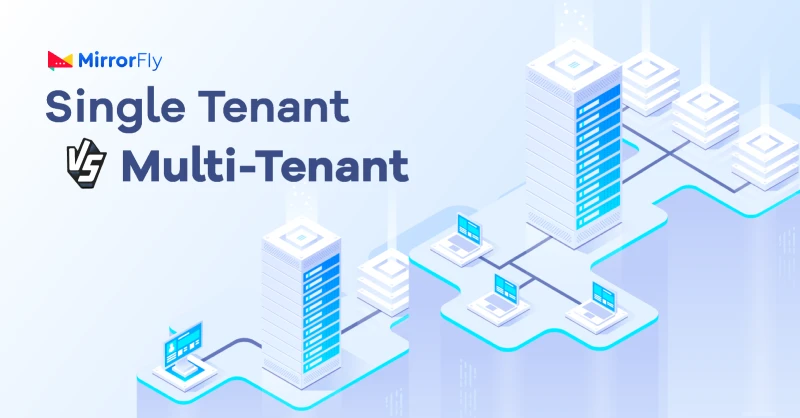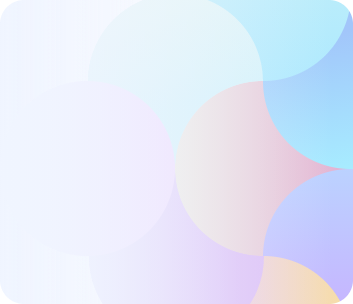SingleTenant vs Multi Tenant Chat: Architecture & Difference

“In the post below, understand the basics of multi-tenant vs single tenant SaaS-based models, and multi-tenancy architecture, to build scalable apps.”
With private cloud computing, ERPs, and SaaS (Software as a Service) business solutions on the rise, enterprises are going haywire on which type of architecture, whether single-tenant or multi-tenant, to opt for their official and customer data.
As both have security and privacy concerns with giving no ownership of data. However, multi-tenancy gives them the flexibility to scale apps quickly. Therefore, in the article below, we will see the differences between the two and their benefits to help you choose the best one for your project.
Starting with,
Table of Contents
What is Multi Tenancy?
Multi-tenancy is a type of software architecture that allows multiple independent users who are also known as tenants, to use a single instance of an application or infrastructure in a shared environment, while keeping their data private and secure.
To simplify it,
Multi Tenant also Means
- All users are connected to the same database and server, but are logically different.
- A single server holds multiple users or tenants.
- These tenants can customize their database, UI, application rules, and more.
- Multi Tenant also powers up scalability compared to single-tenant architecture.
Now we will see,
Single Tenant vs Multi Tenant – Definitions
The terms “Single” and “Multi Tenant” are the two most commonly used approaches to determine how services are deployed and how the software is made accessible to users.
Single Tenant
This type of architecture is where each user has their own dedicated servers or database to take complete control of customizations and data. Here, no sharing happens.

Prime Benefits of Single Tenant Model
- High levels of customization based on user requirements
- Users get full control of data, security, and configurations.
- Gives a high level of privacy by isolating data and resources.
Cons of Single Tenant
- More expensive due to dedicated resources
- Scaling can be difficult
- Less efficient when it comes to resource usage.
Multi Tenant
Multi-tenant model is a type where multiple independent users access software, databases, and services in a shared environment.

Prime Benefits of Multi-Tenant
- Highly cost-effective due to shared resources
- More efficient resource usage
- Highly scalable
Cons of Multi-Tenant
- Limited customizations
- Security or privacy concerns
- Tenants must be dependent on the hosting provider for maintenance.
With all the basics understood, let us deep dive into the multi-tenancy architecture and how it operates.
Multi-Tenant Architecture
Multi-tenant architecture is a software design where multiple users, known to be tenants share the same instance of an infrastructure. Plus, in this type of architecture, though it allows the users to share the same application, their data, access, and configurations are separated logically.
Additionally, multi-tenancy is helping SaaS-based companies as it helps them to scale apps with minimal infrastructure cost, while strategies like SaaS PPC drive targeted customer acquisition.
So, How Does Multi-tenant Architecture Work?
Here’s how multi-tenant architecture works:
- The architecture creates a secure and isolated space in a shared system.
- The system can either be a cloud platform or a virtual machine.
- It then divides the data storage and processing units and distributes them to each user or tenant.
- The tenants work on this dedicated area assigned.
- In this area, they can customize settings, and personalize design and security.
- The admins can also tailor access controls and resource usage to each dedicated area.
Did you know?
Tenants can either be users or groups within your business like departments or individual employees. Or they can be someone outside the company like vendors, or clients who buy your products.
What are the Benefits of Multi-tenancy Architecture?
Multi-tenant architecture offers a wide range of benefits to businesses who are looking to move to cloud or SaaS, like:
- Scalability: As multiple users work in a shared environment, businesses can upscale or downscale to accommodate the varying workloads without the need to manage multiple dedicated systems.
- Better Performance: Multiple tenants share the same storage space or computing power thus increasing efficiency and performance. Plus, it alleviates the need to invest in any additional hardware.
- Quicker Deployments: As multiple users work on a single instance, deploying features can be rolled out once, and made accessible for all users.
- Customizations: Although tenants share a common infrastructure, they may be able to configure certain settings of their environment.
- Easy Maintenance: Backups, monitoring, and other maintenance tasks can be easily carried out by admins as they can address all these issues globally.
- Privacy: Though all the tenants work in a shared environment, each of them will receive a dedicated space to analyze their data, which will be hidden from the others thus promoting privacy.
So, these were some of the major advantages of using multi-tenant architecture. Now, let us see where all of it is put into action.
What are the Examples of Multi-tenant Architecture?
Public clouds and SaaS applications are some of the good examples of multi tenant architecture.
- SaaS Apps: Netflix, Dropbox, and Gmail
- Public Clouds: Azure, AWS, Google Cloud
In these spaces, tenants can manage their own databases and storage spaces without accessing other customer’s data, that’s the true potential of this architecture.
What are the Differences between Multi & Single Tenant Architectures?
The prime difference between the two lies in the way you share resources with different tenants or users. As single tenant architecture uses a dedicated instance of the software, users must bear hardware or software costs and maintenance costs.
Whereas in the case of multi-tenancy, tenants work in a shared environment where hardware and software resources are utilized minimally, thus leading to reduced overhead costs and maintenance fees.
Plus, to help you gain insight in detail about the two types, below is a clear breakdown:

Multi-Tenant Applications and MirrorFly Expertise
MirrorFly, being a leading SaaS and Self-hosted Chat SDK provider of in-app video, voice, and chats, offers a more comprehensive approach to multi-tenancy, allowing businesses to manage and scale their chat apps for multiple tenants in a versatile way.
So How does it Handle Multi-tenancy:
- By assigning unique API keys to each tenant uplifting security, and making it invisible to other users.
- Giving tenants, here developers, options to customize security and other settings to create a more personalized experience.
- Allowing admins to define access controls and permissions for different user groups in a shared environment.
- Helping businesses to scale multi-tenant applications with a growing user base.
- Offering developers cloud-based Chat SDKs to easily build chat apps and worry less about the maintenance part.
Above all these, the firm’s expertise can be seen in the successful development of multi-tenant applications in varied use cases like Super Apps, finance sectors, telehealth and e-learning domains, and more.
Wrapping The Debate!
To put it in a nutshell, opting for single tenant vs multi tenant architecture largely weighs on business infrastructure. If sharing resources and scalability is the pivotal factor of any business, then it is best to opt for multi tenancy.
Rest is your choice, and try it yourself to see which works best for you. In case you still need help, simply opt for MirrorFly’s cloud-based SDKs that give you the required scalability, robustness, security, and more.
Get Started with MirrorFly’s Multi-tenant Chat SDK Today!
Drive 1+ billions of conversations on your apps with highly secure 250+ real-time Communication Features.
Contact Sales200+ Happy Clients
Topic-based Chat
Multi-tenancy Support
